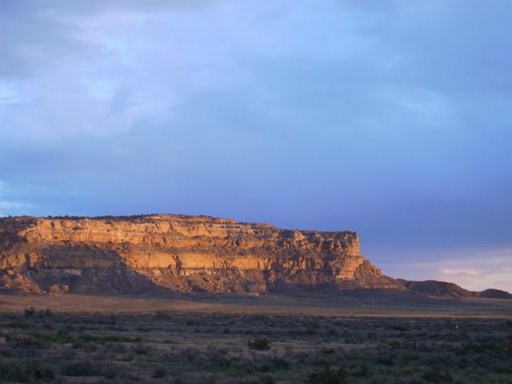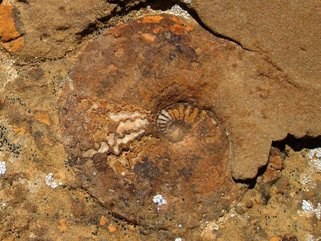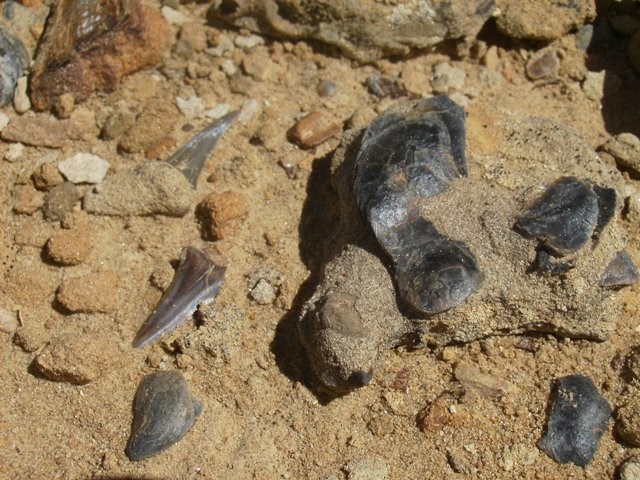
NPS photo by Phil Varela The Cliff House Sandstone is a transgressive sequence of marine sandstones which overlies the Menefee Formation. The three principle Cliff House units (Lower, Intermediate, and Upper) visible in Chaco Canyon represent the beach, near shore marine, and offshore marine deposits produced near a barrier island beach front by repeated incursions of the Western Interior Seaway. The Lower Sandstone unit, a massive marine sandstone, forms the 80 - 100 foot prominent cliffs visible throughout the canyon. This sandstone was deposited just off of a Late Cretaceous beach, in relatively shallow water still affected by wave and storm action. An abundance of ripple marks are visible in this unit. Fossils include shells and casts from clams, ammonites (including possible Placenticeras) snails, and shark's teeth. Iron-cemented, knobby casts of burrows known as Ophiomorpha ("serpent shape") Nodosa ("nodular") are particularly abundant. These casts are thought to be the fossilized remains of burrows left by a small shrimp-like crustacean known as Callianasa. 
NPS Photo by Phil Varela Immediately above the Lower Sandstone unit is the Intermediate unit. Although primarily a shallow water marine sandstone, it has locally interbedded shales which were deposited in deeper water. This unit is less resistant to erosion than the Lower Sandstone and forms gentle slopes rather than cliffs. Fossils found in this unit are generally similar to that of the Lower Sandstone but Ophiomorpha burrows are often less abundant and accumulations of the large clam Inoceramus are often more abundant. The uppermost unit exposed in the main body of Chaco Canyon is the Upper Sandstone unit. It is similar in composition to the Lower Sandstone and also forms steep cliffs, but is generally only 30-60 feet in thickness. This unit represents a beach and barrier island environment and was deposited in shallower water than the Intermediate unit which reflects a lowering of local sea level as the Western Interior Seaway receded for a period of time. Fossils found in this unit include abundant invertebrate shells and shark teeth, and bone debris probably from marine lizards. 
NPS Photo by Phil Varela |
Last updated: February 24, 2015
